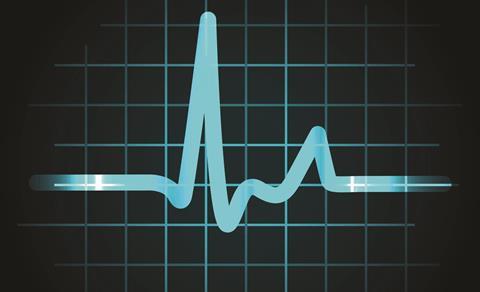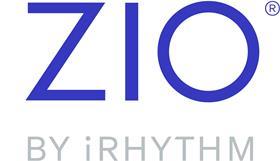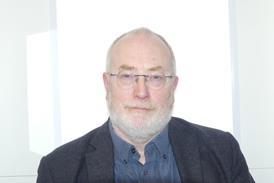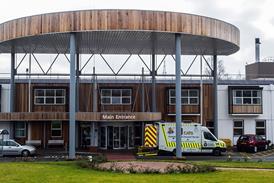A recent HSJ webinar, in association with iRhythm Technologies, explored challenges in arrhythmia diagnosis, highlighting AI’s potential and the need for patient trust

As founder and chief executive of Arrhythmia Alliance, Trudie Lobban is very familiar with the diagnostic process for heart rhythm disturbances. It is a pathway she reports is often far from ideal, leading to “frustration, despair and irritation” for patients and families.
In association with
More than 2 million people in the UK are said to have arrhythmia. Of those, 1.4 million have atrial fibrillation — a heart rhythm disturbance in which the heart beats irregularly and often abnormally quickly and which is associated with an increased risk of stroke.
The condition is diagnosed by an ECG, but waiting times are long and many clinics are at capacity. Compounding the diagnostic challenge is that some people will have only intermittent AF.
“We hear over and over and over again: ‘I’m breathless, I’m exhausted, my heart is racing, it’s leaping around, it’s like a bag of worms in my chest, it’s like the beating of drums, but every time I go to my doctor, it seems to be okay. What can I do?’” Ms Lobban told the webinar.
The purpose of the event was, in some ways, to try to answer that question. And to answer it not just for symptomatic patients presenting in primary care settings, but for those who first learn of a possible rhythm disturbance only when they have experienced a stroke. Might new processes and new technologies — including artificial intelligence — be able to support better diagnosis?
What the event made clear is that worries about current diagnostic processes do not only lie with those waiting for a diagnosis. “The frustration is immense, and it’s not only with the patients; it’s also with the physicians and healthcare professionals because we know that there’s a big problem out there,” reported Saeedur Rahman, a consultant physician in acute and stroke medicine at Dartford and Gravesham Trust and honorary senior clinical lecturer at King’s College London.
He continued: “If you imagine that you’ve told someone that they have had a stroke and it could be related to AF, and they’re just waiting for the right diagnostics and to make that diagnosis, it plays on their mind, and it’s a huge anxiety for them.
“The main issue is the delay in the pathways to actually get to a doctor and have the right kind of investigations done, and also to have the results coming back, and then someone to review those results to make the right decision.”
The challenges were such that, in 2021, Dr Rahman and trust colleagues decided to review the pathway for stroke patients in need of cardiac rhythm monitoring.
They concluded some patients were receiving prolonged monitoring unnecessarily — because other causes for the stroke had already been identified — but also that where monitoring was required, it was generally too brief.
There needed to be “an intermediate duration of monitoring”. This had to be long enough to identify intermittent rhythm disturbances — so longer than the 24-hour monitoring that is common — but simultaneously shorter term and less invasive than implantable loop recorders (which are designed to be in place, where appropriate, for years).
The solution they settled on was an adhesive cardiac monitor that can be worn for up to 14 days. Its use is based on strict criteria — essentially only in patients where the cause of a stroke has not been established and there is reason to believe the cause might be AF. “Our pick-up rate [of AF] with these monitors is ranging between 10 and 12 per cent, compared to a [24-hour] Holter monitor, where it’s less than 2 per cent,” Dr Rahman reported.
Clearly, a longer period of monitoring creates more data for clinicians to analyse, but its proponents argue that here too, technology can play a role. “The device is recording continuously for up to 14 days, so if we were to put it into a traditional system and analyse it, it would take a very long time,” explained iRhythm Technologies director of customer experience and service implementation Jennifer Weller.
“So we have an advanced AI algorithm that uses deep learning, which does the first pass of analysis on that data. It’s an expert-level algorithm. The data goes through the AI algorithm, then it goes to our team of cardiac physiologists, and it makes it much more efficient for them to work through that data. The AI really enables us to analyse it quickly, make sure we’re getting that data back to doctors really quickly so they can make the right decisions.”
While panellists felt technological innovations could make a difference in arrhythmia diagnostic pathways, they were also clear benefits cannot be realised without full patient engagement. “I think it has to be patient-enabled and patient-directed, but clinically managed,” said Well Up North Primary Care Network director of transformation David Thorne. A former nurse, Mr Thorne leads the PCN’s transformation work and is particularly focused on digital technology’s potential to bring care closer to home. To that end, he and colleagues are investigating introducing the iRhythm technology and pathway locally in primary care.
“Clinicians in primary care are always worried that [if] you change a pathway it will mean that they now do more work that used to be in hospitals,” he said. “But we think when we sketch this pathway out, it makes it easier for the GPs and the practice nurses to get results.”
For Ms Lobban, there is reason to be optimistic that such pathway revisions will end the frequent misery of the current process. However, she emphasised the importance of building trust with patients about the use of any new technology.
“It begins and ends with trust and confidence in your local team and your physician,” concluded Ms Lobban. “A better-informed, better-educated person is better able to manage their condition, but you can only achieve that when the medical experts explain to you. So: communication, confidence, trust.”
An on-demand version of this webinar is available.
To access the recording, visit this web page and click play.
If you have previously registered for the event, clicking the link will immediately bring you to the recording. Simply press play.
If you have not previously registered, complete the form that appears. You’ll then be able to immediately watch the recording.


























